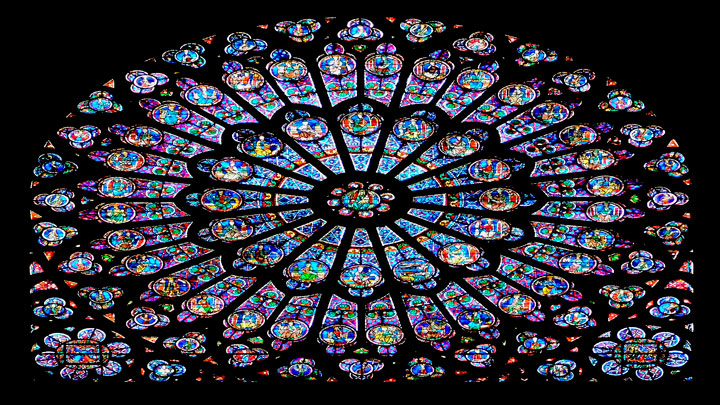We all understand beauty and beautiful things and have experienced beauty in some way, but the story is different when defining beauty. Sometimes when we see a painting, we are surprised by the elegance of the painter; when we hear a piece of music, we are immersed in it; and sometimes, we remember a movie for a long time. How do we understand beauty? Do we all have the same understanding and definition of beauty? Is beauty in our eyes, or does it exist outside, and we feel it? In other words, do we understand or know our understanding of beauty? How do science and philosophy view beauty? If these questions have confused you or made you think, we recommend you stay with us until the end of this article.
What does science say about beauty?
Experimental sciences do not seek to define beauty. These sciences are more concerned with how we react to beauty. For example, one of the questions raised in science is when we are faced with something beautiful, how do our body and brain respond to it?
Professor Semir Zeki, a neuroscientist, says: “When we look at something and find it beautiful, an area in the front of our brain is activated. This area called the medial orbitofrontal cortex, is associated with feelings of pleasure and reward; It’s as if seeing something beautiful acts as a pleasure trigger.” On the other hand, hearing something that we consider beautiful also has the same effect on our brains. So scientifically, there is no difference between different forms of beauty. All of them produce similar physiological reactions in us.
Another point that Zaki mentions is the intensity of beauty. The more beautiful the thing we face, the more intense the brain cortex activity will be.
Do we react this way to the opposite of beauty, horror? The answer is yes. When faced with something that we consider ugly, our brain’s amygdala becomes more active; This part deals with fear and anger as if we are trying to escape from ugly things.
What does psychology say about facial beauty?
Many of us imagine that to define the beauty of the face of movies is based on Instagram images and, in a word, media stereotypes. Many believe what we consider beautiful faces result from cultural teachings in specific formats. This idea has supporters and is valid to some extent, but the definition of facial beauty is not just cultural. We all unconsciously agree on the same components in discussing facial beauty! Psychologists noticed this when they studied infants and adults.
Babies’ Perceptions of beautiful faces
Scientists know that babies stare at something beautiful when they see it. Using pupil tracking technology, scientists have shown that 12- to 24-month-old infants are attracted to images with specific visual characteristics, such as symmetrical features and feminine facial elements. The reaction of infants who had not yet had any connection with cultural issues was similar to the response of adults who had seen the same images. As a result, it can be said that similar elements play a role in defining facial beauty, parts that have nothing to do with cultural issues that we face as adults.
After many studies, scientists have found common characteristics that influence our Judgment of beautiful faces. These characteristics are independent of cultural influences. In other words, when we see these features on a person’s face, we judge them as more beautiful. These features include:
- The presence of symmetry in the face: when we face a look that both halves are similar, we evaluate it as more beautiful.
- Secondary sexual characteristics in the face include a large jaw and more prominent eyebrows in men and feminine features in front of women.
- Uniformity and smoothness of the skin.
- Smiling: Almost everyone rated smiling faces as more beautiful than expressionless.
Definition of beauty from the point of view of philosophers

Before we review the opinions of some philosophers about beauty, pay attention to the following issue.
In an art gallery, there is a painting by Picasso. For 20 years, art critics and gallery curators have praised this work and its artistic subtleties. So far, the image has been taken to different galleries, and they have put an exorbitant price on it. Now let’s assume that it is clear that this painting is not Picasso’s but an imperfect forgery of the original work. Now the question arises, should we discard the artistic value of the image and everything said about it? Are you aware that the board’s appearance has not changed and there has been no change in it? It just turned out that the work does not belong to Picasso! Now that the fakeness of the work has been proven, don’t you find it beautiful and eye-catching anymore?! Before reading the rest of the article, think about these questions.
Aesthetics in philosophy seeks to understand the meaning and concept of beauty; What is beautiful, and what are the characteristics of something beautiful? Also, the examination of our understanding of beauty is followed in this field. How does one describe something as beautiful? Does beauty have an external nature and existence that we identify, or is beauty a subjective concept revealed in our interpretation and view of phenomena?
Think about the last time you described something or someone as beautiful. What made you come to this conclusion? What components and reasons were behind your announcement? To understand how your answer was formed, we look at the definition of beauty according to the great philosophers.
1. Plato
In Plato’s view, our world is not accurate but a form of an ultimate and perfect world. His theory, known as the theory of formalism in the history of philosophy, states that everything is perfect and complete in the world of forms (ideas). This world is only a shadow of the ideal world. Beauty in the perfect world is independent of our vision. According to Plato, with this definition of beauty, how do we understand the ideal world? By remembering the complete form of every phenomenon and everything! For example, when we think about justice, its ultimate form is imprinted. But what happens in this world is only a part of that top form. So when the beauty of a flower or a sunset captures our attention, we look at an imitation of absolute beauty.
Contemplating beauty makes the soul grow.
– Plato
2. Aristotle
Aristotle also has a theory about beauty similar to Plato’s theory. He also considers beauty independent of the human gaze; There is beauty in nature, and we humans imitate it with the help of art. Of course, unlike Plato, Aristotle did not consider the beauty of nature to be an imitation of the world of forms. In his view, everything with three characteristics is beautiful: symmetry, proportion, and balance.
3. Saint Augustine
The famous medieval philosopher, influenced by the Greek view of beauty, divided it into God’s creation and human art. From his point of view, God is an absolute beauty and ultimate form. Therefore, no matter how creative people are in their craft, the product of their hands is less beautiful than the work of the creator.
4. Kant
Immanuel Kant, one of the famous philosophers of history, says about the Judgment of beauty: “Feelings often accompany Judgment about the beauty of a thing. Emotions that cannot be measured. Therefore, authentic aesthetics must be a judgment devoid of emotions and based solely on carefully examining the form.
Based on these arguments, Kant is considered the founder of formalism. Formalism means examining an artwork based solely on the style and forms it is placed in. For example, we look at the work’s form when we read a poem without paying attention to its meaning and concept and only based on the quality and variety of literary arrays used. It can be said that Kant also considers beauty beyond our eyes.
The philosophers we have mentioned so far are examples of people who define beauty as independent originality. In this case, beauty is an objective. In this view, beauty does not depend on our opinion and interpretation; our opinion and understanding can only discover and describe it.
5. David Hume
“Beauty” is not a property of different things. Beauty exists only in our perception of an item. Each mind interprets beauty differently. One person may find something beautiful, and another may find it ugly. Of course, Hume believes in a standard definition of beauty among most people, but this definition is also a collective agreement among people.
6. Alexander Baumgarten
This German philosopher was the first to use the term “aesthetics” and define a modern meaning: feeling beauty. He proposed the concept of judging beauty based on the human senses. In this view, unlike philosophers such as Kant and Aristotle, we understand and believe in beauty based on our minds. He encourages people to pay attention to the role of morality in these judgments and notice their impact.
This group of philosophers, closer to the contemporary era, consider beauty a subject. In this view, beauty is not something we want to discover outside. Beauty is our interpretation of beauty. For example, when you go to an art gallery with your friends, everyone has a different and unique opinion about a painting. From the point of view of these philosophers, every definition and interpretation is valid before the person himself and maybe others.
What is your definition of beauty?
What is your definition of beauty? Are you familiar with the opinions of other philosophers or scientists about beauty? What do you think is human beauty? Please share your views with us in the comments section.



